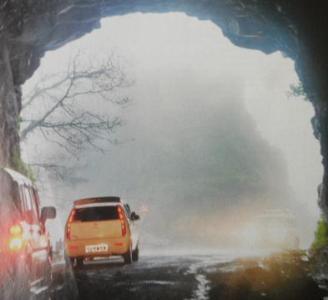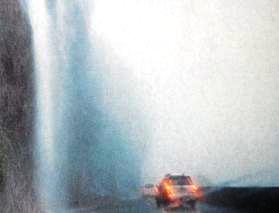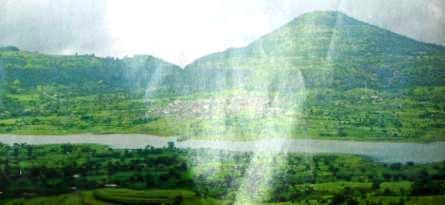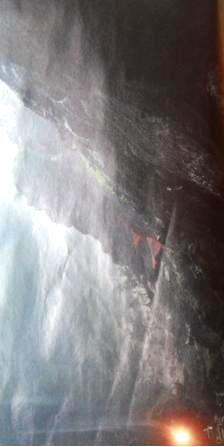Do you want to see all the four seasons raining on earth on the same day? It may appear strange. But it’s true. Come to Malshej Ghat – a beautiful place of Maharastra. This place is a few distant away from Mumbai. Start at late midnight or early morning from Mumbai if you want to get the beautiful experience of all seasons a day. Also, you will get the lovely experience of a waterfall that fall directly to road. In addition to it, you can visit temples and dams and find the stories hidden behind it.
Now let us begin the search of seasons from Mumbai after midnight
Mumbai is like a carnival of festivals, crowd, shopping centres and enjoyment. Roads are not lonely even at midnight. India Gate, Nariman point, Chatrapathi Sivaji Terminal (old Victoria terminal railway station), British model buildings nearby, beaches, flats, streets, slums; when you start from Mumbai to go to Malshej you can see all these ‘spices of Mumbai’. From Mumbai CST, you need to travel through state highway road passing through the places Kalyan, Murbad, Siral Gauv, Ahmed Nagar and finally reach Malshej Ghat. On the way you will get a strange experience on a waterfall falling directly to road. For tourists and new comers, of course it’s a strange experience.
At the dawn break
If you start around 2pm from Mumbai, travel is easy and at early morning you can reach this dream world. Mist covers all the places and the nature is extremely beautiful at its best with its ‘village looks’. From the metro Mumbai, if you are willing to travel 150 km spending just 3 hours, you can surely experience this wonderful and unbelievable sight of nature’s beauty.
When sun reaches green mountains and valleys it gives a three dimensional view to earth. You can see a narrow river falling from the top of the green mountains. It’s Pushpavathi. On one side of the road are green mountains and on the other side green valleys. Pushpavathi adds extra beauty to those green valleys.
Pimpalgaon Joga dam
Giving home arrest to Pushpavathi, a dam is built on it. It’s pimpalgaon joga dam. It makes us remember the story of Karthaveerarjuna. When he found that water level is not enough for bath of his beloved wives he made a dam with his 1000 hands to raise the water level. Pimpalgaon Joga dam is spectacular to watch, each drop of water waiting for its spilt. We can see mountain ranges here and there to make us remember the story of Karthaveerarjuna. Beautiful birds of rare varieties often pay visit this dam. Swans, green doves, different types of cuckoo, purple moron and fire-eating birds are a few among them. If you have enough time, you can wait patiently to see those guests arriving there.
Vighneswara on Mountain top
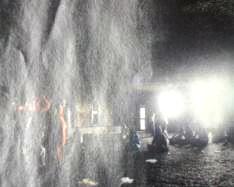
Now let me describe how the Vinayak temple is built. It’s a series of about 30 rock-cut caves of which Ganesha shrine is placed in Cave 7. Once it was a dwelling and praying place of Buddhist monks. Temple was built cutting rocks centuries before and rocks were dated to be formed in between first and third century AD. A rectangular hall is there of 50 ft width and 60 ft length and most surprising is that this hall is not supported by pillars in between. At the entry point you can find 6 pillars with beautiful sculptures. Inside a lot of rooms are present and they are used as praying halls. ‘Lenya’ is a Marathi word meaning ‘cave’ and ‘adri’ is a Sanskrit word meaning mountain. So, lenyadri means ‘cave on the mountain top’. You can find 26 or more caves on this mountain top of which Lord Ganesha is placed in the seventh one. Among the eight Ganapathi temples, Lenyadri is the only cave temple.
Shivneri Fort
It’s the journey to the birth place of Chatrapathi Sivaji about whom we have studied in our history books since our childhood. Junnar is a small town and Shivneri fort is nearby. You can see a region enclosed within forts. In front of the fort you can see small shops, travelers and archeologists who are there for one reason or other. Now let me tell you the story behind this historic fort. As I have told, Sivaji was born here. This fort was chosen by his father Sha Haji for his wife, Jija Bhai as there was a war threat from Mughal Empire. Wars were frequent at that time and Sha Haji was concerned about the safety of his pregnant wife and unborn child. Sivaji spend his childhood days here.
You need to climb a lot of steps to reach the top. If you are adventurous then you can leave those steps and choose trekking methods to reach there.
Favourite location of many directors
Malshej Ghat is the favourite location of many directors and camera men who are famous for their cinematography in the movies. Maniratnam and Santhosh Sivan are among those directors who can’t compromise nature’s beauty with studio’s artificiality. Malshej Ghat is one among the favourite locations of these two directions who have always been in news for their wonder scenes. Santhosh Sivan’s Malayalam periodic movie ‘Urumi’ and Mani Rathnam’s movie Ravan are the best examples. 60% of both these movies were shot at Malshej Ghat and surrounding places and still now, both these movies are memorable for those camera movements. Climax scene of Ravan was captured at one of these beautiful locations. “Even after putting expensive sets, we can never match the natural beauty of Malshej Ghat. Those waterfalls of rainy season give an amazing background as a curtain” – says Santhosh Sivan.
Now let us return back
When you return back you can see that viewpoint marked ‘Malshej Ghat’ from where you can see that unique waterfall again. On the left side, after the tunnel is the village sight. Now let us return back before the sight vanishes in mist completely.
Now the places around are in the hands of rich people and very soon we may see the greenery giving way to shopping malls and huge flats. It’s so sad to hear such heart breaking news that today or tomorrow these natural shades of green and nature’s innocence will be painted with artificial colours and variant shades of modern man. So, if possible do visit here at least once in your life time before the nature’s blessings vanish forever.
A few travel tips before I conclude
Malshej Ghat is 700 feet above the sea level and is 150 km away from metro city Mumbai. Its opening is in the west direction of Sahyadri Mountain. Nearest airport is CST Mumbai and nearest railway station is Kalyan. From Kalyan, Karjat and Pune transport buses are available.
